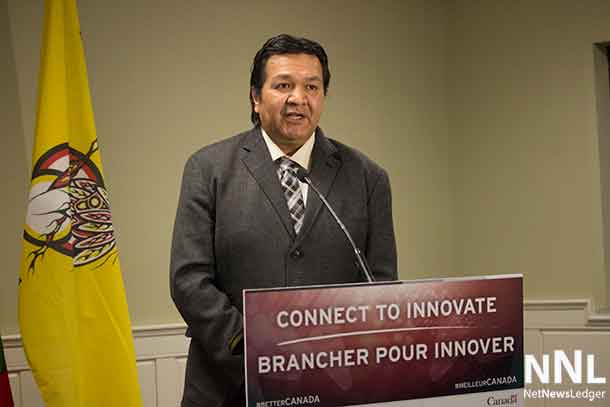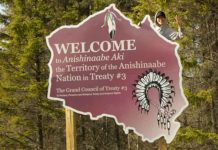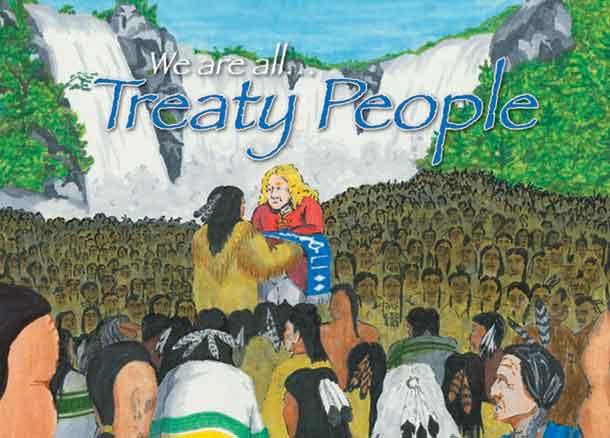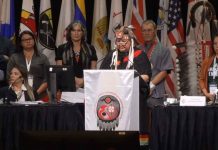WINNIPEG – INDIGENOUS – This is a story about sharing.
In 1850, 21 Anishinabek nations in northwestern Ontario signed the Robinson-Huron Treaty, allowing Canada access to more than 97,000 square kilometres of territory, ranging from Georgian Bay to Lake Superior and east all the way to Quebec. This would become the middle of what would later be called Ontario, encompassing communities such as Sault Ste. Marie, Sudbury and North Bay.
The agreement, negotiated with Queen Victoria’s representative, William Benjamin Robinson, promised each First Nations citizen around $2 a person, with promises to increase the annuity as the land was developed and resources were used.
First Nations, witnessing increasing newcomers in their area, saw the treaty as an opportunity to share the land and grow their nations and families alongside others. They saw the document as a “living” arrangement, something that would change and grow as the people and the community changed.
In 1874, the annuity was increased to $4, as industries — in particular, forestry — grew. Cities were built and Canada began to expand economically and politically.
Everything was growing. That is, until Canada decided not to increase the annuity.
For all years following, Anishinabek received $4 per year under the Robinson-Huron Treaty. They also lived under the draconian, controlling Indian Act that drove them into poverty, forcibly kept them in it, and provided substandard schools and dire situations to ensure they stayed this way.
Meanwhile, in some of the most profitable and resource-rich lands in Canada, the province of Ontario built a juggernaut economy.
In what one Anishinabek leader called a constant “slap in the face,” things continued like that for 140 years.
That is, until 2014, when 21 Anishinabek nations took Ontario and the federal government to court over the annuity, stating they have been effectively “frozen in time” and shut out of the wealth generated from their territory.
The Robinson-Huron Treaty, the lawsuit stated, was intended to represent a growing relationship, not a one-time land purchase.
After years of building and arguing the case, on Dec. 23, 2018, Ontario Justice Patricia Hennessy agreed with the Anishinabek, ruling the Crown has “a mandatory and reviewable obligation” to increase the annuity when wealth increases in the region.
“The treaties were not meant to be the last word on the relationship,” Hennessy wrote in her decision. “Renewal of the relationship was necessary to ensure that both parties could continue to thrive in changing environments.”
The judge refused to propose what the annuity increase should be, but called for all parties involved to develop processes and procedures “to renew their treaty relationship now and in the future.”
The negotiations begin.
Estimates are the province of Ontario has made several billion dollars as a result of the treaty. Let’s say Anishinabek get $5 billion — that’s just to bring the agreement up-to-date.
Now, let’s calculate the annuity going forward: that’s $4 per year which, according to the Bank of Canada inflation calculator, is roughly $100 in 2019 dollars. There’s 30,000 Anishinabek under the Robinson-Huron Treaty. At $100 each, that’s $3 million a year (up from $120,000) — that’s just to make the agreement equitable and sustainable.
This isn’t Indigenous Peoples “taking” anything from anyone. This is Canada fulfilling its obligations. If Anishinabek nations “want” anything, it’s for Canada to live according to the principles of the law.
Imagine the Robinson-Huron Treaty decision becomes a national precedent — as many say it will be.
While treaties govern relationships between Indigenous Peoples and the Crown, the Supreme Court oscillates between two interpretations of them.
One is the Canadian view: that treaties surrendered rights and acquiesced First Nations control and nationhood to the Crown. And the First Nations side: that treaties confirmed rights and were an agreement to work together as partners, or in what’s often called a “nation-to-nation” relationship.
For decades, the Canadian interpretation of treaties was used as the benchmark, but for the past few decades, Indigenous interpretations have been used. Canada also has a prime minister who has vowed a “nation-to-nation” relationship with Indigenous Peoples.
If Canada believes itself to be a country that values equity, justice and fairness — a place where promises given are promises delivered — the issue of how to share appropriately is one of the most important critical questions this country faces.
Turning our attention to Manitoba: there are around 34,000 citizens in the seven First Nations in Treaty 1, who receive an annual annuity of $5. That hasn’t changed for around 140 years.
With the Bank of Canada inflation calculator, that’s about $110 per person or around $3.7 million a year (up from the current cost of $170,000).
Now, here’s the equity part: how much is the Treaty 1 land worth? It encompasses Winnipeg, Portage la Prairie and Selkirk. A few billion? A trillion?
What’s half of that?
And there are five treaties that span Manitoba. And the Métis, too.
If treaties are relationship-making vessels where everyone should benefit, they should be about more than words. They should be about sharing.
But this is just a story.
For now.

Niigaan Sinclair
Originally appeared in the Winnipeg Free Press on January 8, 2019. Republished with permission of the author






